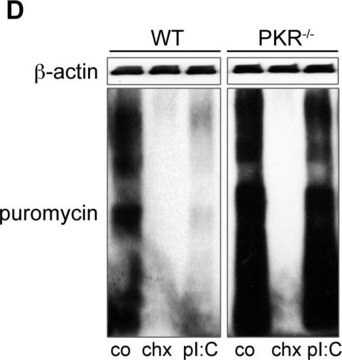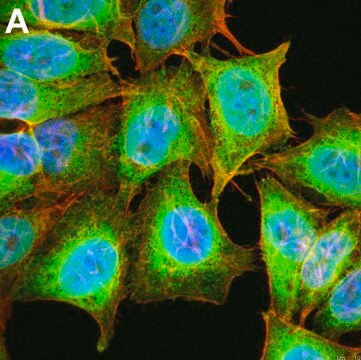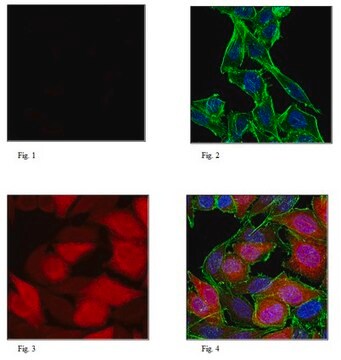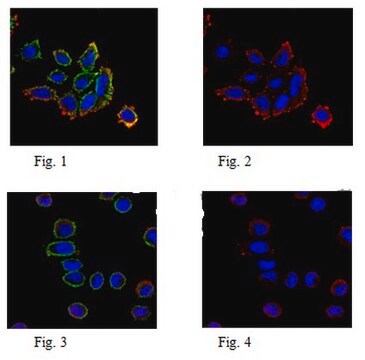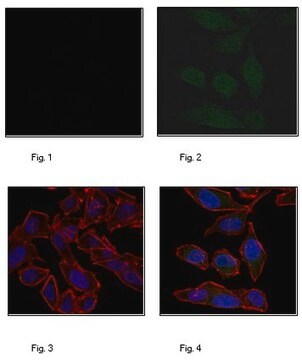MABE343-AF488
Anti-Puromycin, clone 12D10, Alexa Fluor™ 488 Conjugate Antibody
clone 12D10, 0.5 mg/mL, from mouse
Sinônimo(s):
Alexa Fluor 488 antibody
About This Item
Produtos recomendados
fonte biológica
mouse
Nível de qualidade
conjugado
ALEXA FLUOR™ 488
forma do anticorpo
purified antibody
tipo de produto de anticorpo
primary antibodies
clone
12D10, monoclonal
reatividade de espécies
human
concentração
0.5 mg/mL
técnica(s)
immunocytochemistry: suitable
Condições de expedição
wet ice
modificação pós-traducional do alvo
unmodified
Descrição geral
This product is a conjugated version of Cat. No. MABE343.
Especificidade
Imunogênio
Aplicação
Epigenetics & Nuclear Function
Cell Cycle, DNA Replication & Repair
Qualidade
Immunocytochemistry Analysis: A 1:2,500 dilution of this antibody detected Puromycin-incorporated neosynthesized proteins in HeLa cells treated with Puromycin only.
Alexa Fluor™ is a registered trademark of Life Technologies.
Descrição-alvo
forma física
Armazenamento e estabilidade
Informações legais
Exoneração de responsabilidade
Não está encontrando o produto certo?
Experimente o nosso Ferramenta de seleção de produtos.
Código de classe de armazenamento
12 - Non Combustible Liquids
Classe de risco de água (WGK)
WGK 2
Ponto de fulgor (°F)
Not applicable
Ponto de fulgor (°C)
Not applicable
Certificados de análise (COA)
Busque Certificados de análise (COA) digitando o Número do Lote do produto. Os números de lote e remessa podem ser encontrados no rótulo de um produto após a palavra “Lot” ou “Batch”.
Já possui este produto?
Encontre a documentação dos produtos que você adquiriu recentemente na biblioteca de documentos.
Nossa equipe de cientistas tem experiência em todas as áreas de pesquisa, incluindo Life Sciences, ciência de materiais, síntese química, cromatografia, química analítica e muitas outras.
Entre em contato com a assistência técnica